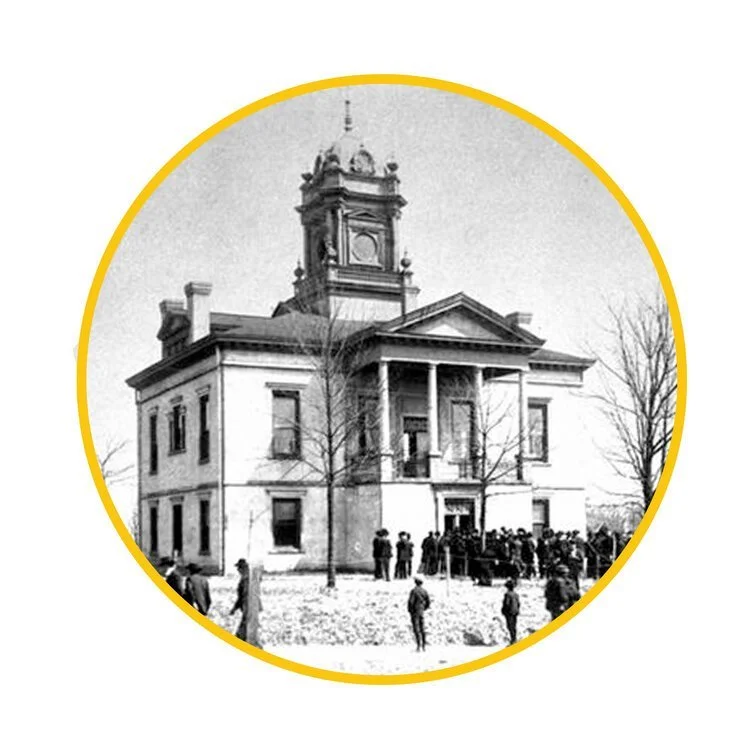Symbols on the Historic Courthouse Square
In 1830, the General Assembly authorized the Burke County Court of Pleas and Quarter Sessions to replace the “shabby, weather-beaten” plank courthouse originally built in 1791. James Binnie, a Scottish builder, and Frederick Roderick, a German stonemason, completed the existing courthouse in 1837 with native stone quarried on the Forney plantation, four miles north of Morganton. From 1847 until 1862, the North Carolina Supreme Court held its August session in the courthouse for the convenience of lawyers from the western part of the state.
Monuments & Memorials on the Historic Courthouse Square
The Confederate Monument featuring an anonymous Confederate soldier is prominently placed on public property on the historic courthouse square. In 1911, the original finial with a bronze plaque was installed. In 1912, Burke County’s Confederate Soldier Monument base was erected near the finial by the local chapter of the United Daughters of the Confederacy. The bronze statue of the Confederate soldier was added to the monument in 1918 when gifted by Captain William Joseph Kincaid, a Burke County Confederate veteran.
A statue of Senator Sam J. Ervin, Jr., who was Chairman of the Senate Select Committee on Presidential Campaign Activities during the Watergate Scandal, was dedicated in 2007.
A memorial rose garden was given in memory of Robert “Bob” Byrd (1930-2001), a prominent Burke County attorney.
The Charters of Freedom, dedicated in 2014, was installed by Foundation Forward and features an engraving of the Declaration of Independence, The United States Constitution, and The Bill of Rights.
The Burke County Veterans Killed in Action (KIA) Memorial, installed in 2021 by a local non-profit veterans’ group, recognizes Burke County service members who have died in action since WWI.
Confederate Monuments in Public Places: Honor or Injury?
Arguments for keeping the statue on municipal property:
It is our heritage, it is not about hate.
Our family members are honored here by name.
The war was about states’ rights and citizens freedom to govern themselves.
It has been here for over 100 years.
Though the Confederacy was defeated, the cause was noble.
Despite the cause they fought for, the soldiers should be commemorated.
Removal is destroying history.
Arguments for removing the statue from municipal property:
The Confederate cause was treasonous.
The war was about states’ rights to preserve slavery.
During the Civil War, Burke County was also home to Unionists.
Not appropriate in a modern diverse community.
It does not represent the heritage of most African Americans and others.
The statue is hurtful to many people of color.
It presents a negative image of Burke County.
Possible Solutions
Monuments have been and can be removed to cemeteries, museums, or storage. (Note: A 2017 NC law prohibits removal without permission)
Monuments have been contextualized with plaques, exhibits around the statue, or added stories and interpretations.
Statues representing African Americans and others have been installed in proximity.
Education and discussion programs such as Western Piedmont Community College’s 2020 Symbols of the South Symposium have been presented.
Morganton News Herald responds to the clash on Courthouse Lawn over the Confederate Monument, July 2nd, 2020


